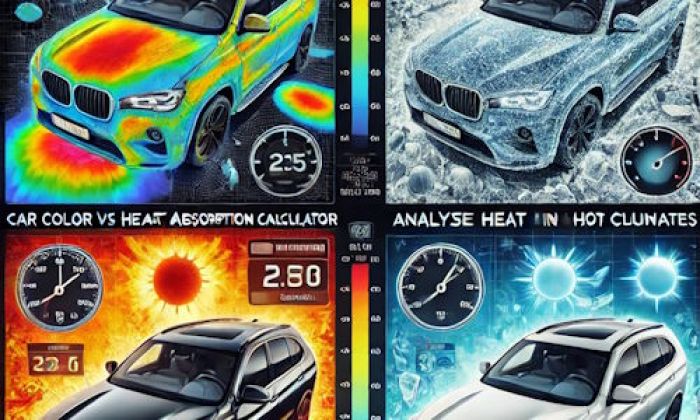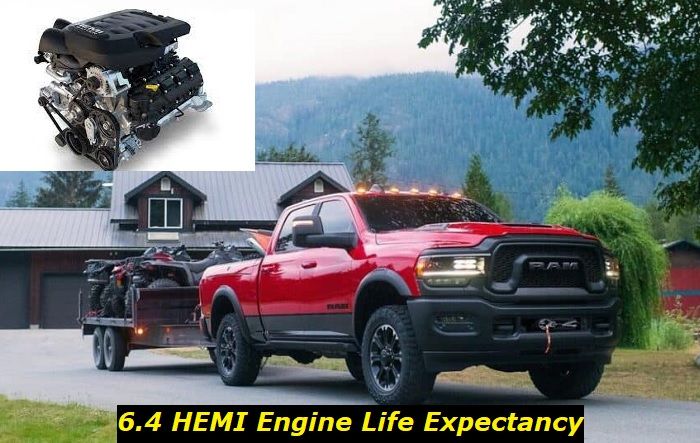The 3.3L Duratec, otherwise known as the Duratec 33, is an engine that's known for powering up big vehicles of Ford such as full-sized pickup trucks and SUVs. It is something you can trust when it comes to daily drives or heavy-duty tasks because of its performance, reliability, fuel economy, and durability.
The engine is widely accepted because of its high level of utility but it's far from perfect. Some Ford owners have complained about certain problems traced back to the engine, and that's also what we are going to look at here.
.jpg)
Key features and my opinion about the engine
- Production years:2018-2023
- Average lifespan of 3.3L V6 Duratec:200,000-230,000 miles
- Fuel supply type:direct injection
- Power range:285-290 hp
- Fuel efficiency:average
- Engine block material:aluminum
- Engine reliability score:medium
- The most common problems:water pump failure, phasers are pretty weak, oil leaks are common.
How Long Will It Last?
The Ford 3.3L Duratec promises around 220,000 to 260,000 miles before requiring an overhaul or key parts replacement. It should be noted though that the product only came out in 2018, hence, there's no actual long-term data that could back this claim at the moment.
Looking at our past experiences with the engine, however, the figures may not be far-fetched at all. The Duratec line is basically known for its resiliency in its primary applications. It's for this reason that the range has lasted from 1993 up to the present.
Apart from its use in 2018 to the present Ford F-150 and the 2020 Ford Explorer Hybrid, the 3.3L engine is utilized in the Ford Police Interceptor, too. Its major role in law enforcement is another implication of its reliability.
With regular preventive maintenance and proper care for your vehicle, it can surely achieve the mentioned feat and you can guarantee its usefulness for the whole decade since it was bought new or more.
Most Common Symptoms of Problems Linked to the Engine
Problems are unavoidable in just about every engine. These can stem from plenty of factors such as poor maintenance, bad driving habits, and regular wear. If we are to enumerate all the problems that you can possibly encounter in a Ford engine, then it would take us forever to write them all here.
Therefore, we have only compiled the top recurring problems encountered by 3.3L Duratec engine users based on automotive publications, customer reviews, car forums, and personal accounts from expert mechanics.
According to the mentioned sources, here are the most common problems you can expect to encounter in the Ford 3.3L Duratec engine:
1. Low Towing Capacity
For a workhorse engine, there's a high expectation of the towing capacity of the 3.3L V6 engine. However, those who are used to seeing the F-350's over 12,000 lb. capabilities may find themselves wanting more than the F-150's 7,700 lbs. limit.
This is not a mechanical problem in itself but more of a user preference, so there's really no going around with this issue. Our best advice is to consider another engine if you still need to tow huge weights regularly.
2. Fluid Leaks
Another source of major complaints from the 3.3L Duratec is oil and coolant leaks. If left unchecked, these could bog down the engine and its cooling system, which can cause plenty of performance and temperature-related issues. The usual causes of leaks in vehicles equipped with this engine are damaged seals and gaskets.
3. Overheating
The worst complaint from a relatively new 3.3L Duratec is overheating. In the case of the F-150, the most likely culprit is a water pump failure. The secondary cause is a coolant leak.
Most Common Causes of Problems in the Engine and Their Solutions
There are many ways to go around the problems linked to the Ford 3.3L Duratec engine, however, we have streamlined the best possible solutions for them based on the parts that have the most likelihood to fail based on the personal experiences of owners and reports from sources familiar with the product.
1. Seal or Gasket Damage
If your Ford 3.3L Duratec engine is leaking fluids, the seals and gaskets are likely worn or damaged. These should be fixed immediately to avoid long-term damage to the moving parts of the engine brought about by insufficient lubrication and to prevent the fluids from getting into areas where they shouldn't be such as the coolant fluid seeping into the oil reservoir or the oil going into the coolant system.
First, you'll need to identify where the leak is coming from. If it's coming from the oil system, the oil pan gasket or valve cover gasket is probably damaged. If it's coming from the coolant system, the head gasket is possibly compromised.
Once you've identified the source of the leak, you'll need to replace the seals and gaskets. To do this, you'll have to remove the affected parts and clean the surfaces before installing the new seals and gaskets.
2. Oil Pan Damage or Worn Oil Drain Plug
Another source of oil leaks is a damaged oil pan or worn drain plug. To diagnose the problem, start by checking the oil level and looking for any leaks around the oil pan. If the oil level is low and there are leaks around the oil pan, then it is likely that the problem is a damaged oil pan or worn drain plug.
The oil pan and drain plug are located on the bottom of the engine. The oil pan is in the front, and the drain plug is in the back. To replace a damaged oil pan or worn drain plug, remove the old one and then install a new one in its place.
Make sure to torque the new drain plug to the proper specifications. Test drive the vehicle to make sure there are no more leaks before taking it back on the road.
3. Water Pump Failure
For reasons we can't quite figure out, many owners of 3.3L V6-equipped F-150 trucks have been airing problems related to water pump failure. In 2021, Ford also issued a recall for the F-150 correlated with its powertrain control module failing to manage the coolant pump in some instances.
If you find yourself having to deal with this problem, there are a few ways you can go about fixing it. One option is to change the entire water pump assembly, which can be found in the engine compartment, near the front of the truck. It's a large, cylindrical component that's mounted to the engine block. This should be done by a qualified mechanic, as it requires special tools and knowledge to do precisely.
Another option is to replace just the impeller of the water pump. This can be done without having to remove the entire water pump assembly and is a simpler repair that can be completed by someone with less mechanical experience.
Finally, if the problem is only confined within the powertrain control module, you may be able to have this repaired or replaced without having to replace the entire water pump assembly.
A simple PCM flashing will likely be the cheapest and most straightforward option if it's only the software of the computer box that's acting up, but it's important to consult with a qualified mechanic to ensure that this is the right solution for your particular situation.
No matter which route you decide to go, fixing a water pump failure on your Ford F-150 3.3L Duratec V6 truck doesn't have to be a nightmare. With a little bit of knowledge and effort, you can get your truck back up and running in no time.
Key Specifications of the Engine
The Ford 3.3L Duratec is a naturally-aspirated V6 engine. It features twin-independent variable cam timing (ti-VCT) and fuel is fed via a direct injection system. The unit has a bore of 90.4 mm and a stroke of 86.6 mm ensuring its effective airflow quality. It has a compression ratio is 12.0:1, which translates to efficient fuel combustion.
The engine also makes use of aluminum for its block and head to keep its durability and maintain its weight. In addition, it is fitted with a chain drive that's built to last compared to a timing belt that requires replacement after reaching a certain mileage or level of wear.
Overall, the engine provides up to 285 hp at 6,500 rpm and 260 lb-ft of torque at 4,000 rpm for the Ford-F150. The numbers are boosted when it is combined with an electric motor for a hybrid powertrain such as the one equipped in the Explorer Hybrid which nets 318 hp at 6,500 rpm.
Without the hybrid system in place, the 3.3L V6 on the Ford F-150 can still deliver a good 19 mpg on city drives and 25 mpg on the highway.
Conclusion
It's hard to go wrong with Ford if you're looking for engine performance and reliability. The 3.3L Duratec is a good example of this.
The engine may be rigged with some issues but it appears that most of the woes of owners about it are isolated cases, and can definitely be remedied. With these, we still highly recommend this engine if you're looking for a total workhorse tailored to your daily activities or work needs.
About the authors
The CarAraC research team is composed of seasoned auto mechanics and automotive industry professionals, including individuals with advanced degrees and certifications in their field. Our team members boast prestigious credentials, reflecting their extensive knowledge and skills. These qualifications include: IMI: Institute of the Motor Industry, ASE-Certified Master Automobile Technicians; Coventry University, Graduate of MA in Automotive Journalism; Politecnico di Torino, Italy, MS Automotive Engineering; Ss. Cyril and Methodius University in Skopje, Mechanical University in Skopje; TOC Automotive College; DHA Suffa University, Department of Mechanical Engineering






Add comment